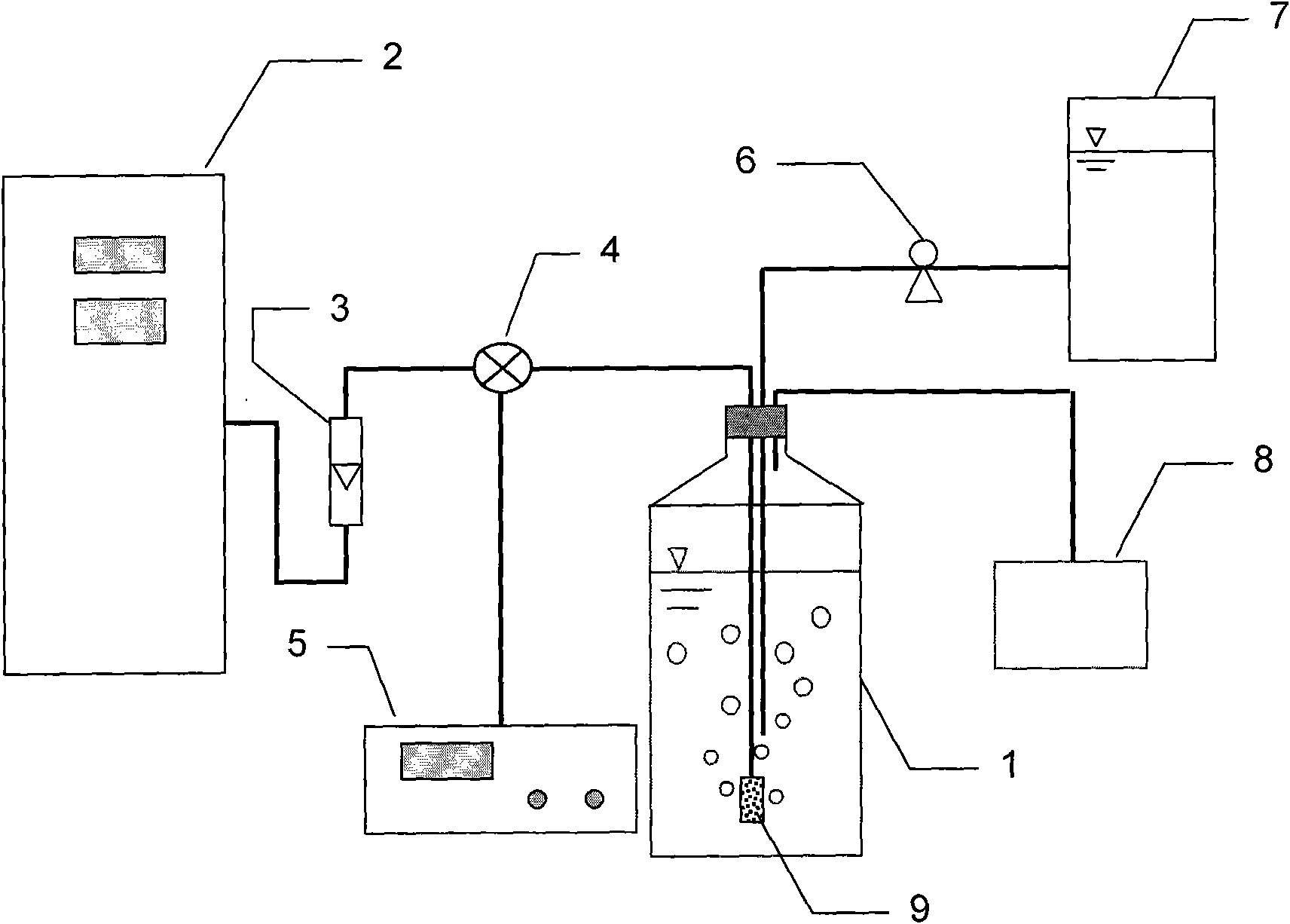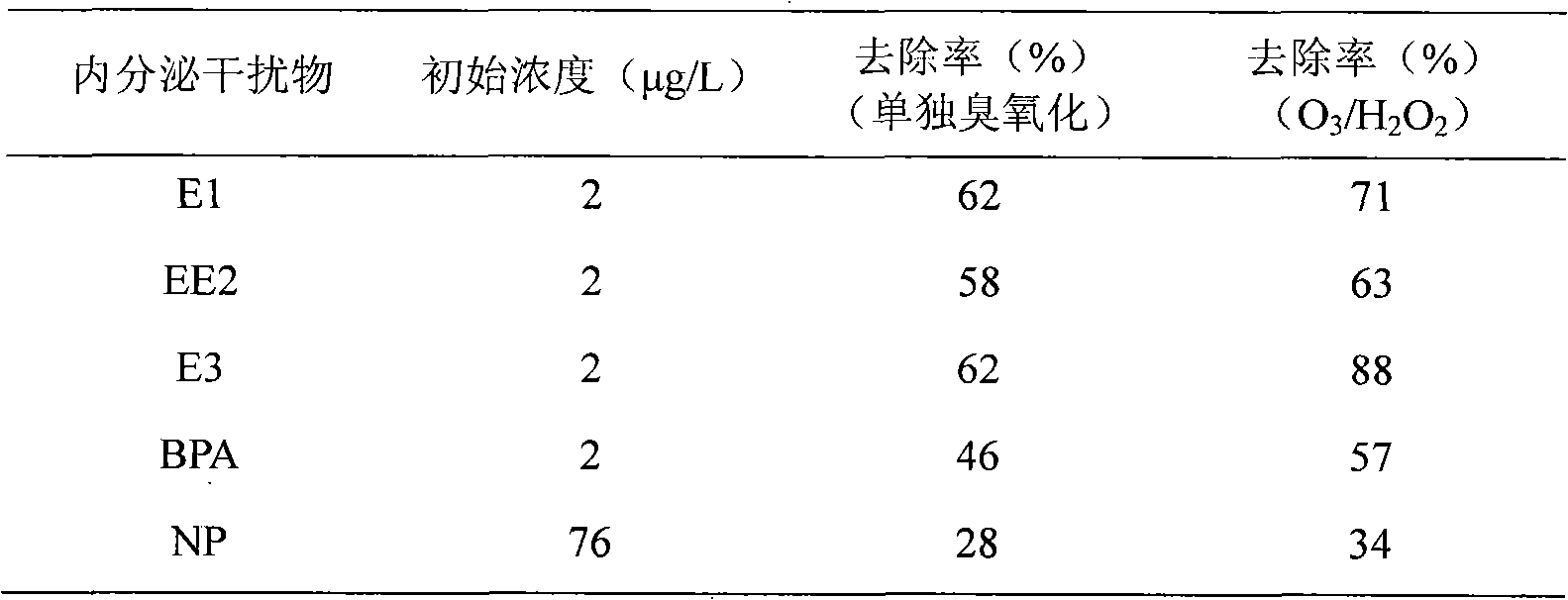Process for realizing decrement of active sludge and removal of endocrine disrupting chemicals from sludge synergistically
An endocrine disruptor, activated sludge technology, applied in water/sludge/sewage treatment, oxidation treatment of sludge, biological sludge treatment, etc. Water ecology and human health threats, to reduce the load of organic micro-pollutants, enhance the effect of sludge reduction, and facilitate continuous automatic operation.
- Summary
- Abstract
- Description
- Claims
- Application Information
AI Technical Summary
Problems solved by technology
Method used
Image
Examples
Embodiment 1
[0016] We collected activated sludge from the secondary sedimentation tank of the sewage treatment plant. Due to the low concentration of endocrine disruptors E1, EE2, E3 and BPA in the sludge, we spiked the sludge. The concentrations of the interfering substances are shown in Table 1. The dosage of ozone is controlled at 30mg / g SS, and the ozonation time is 10 minutes. h 2 o 2 Batch addition is adopted, that is, one-time dosing at the beginning of ozonation, H 2 o 2 The dosage molar ratio with ozone is 1:1. The removal effects of each endocrine disruptor are shown in Table 1. Compared with individual ozonation, the removal rate of each endocrine disruptor has been significantly improved. In addition, in the single ozonation process, the concentration of phenolic endocrine disruptors in the sludge liquid phase will increase, because a large amount of these substances will dissolve into the liquid phase with the dissolution of the sludge. However, in the process of the pr...
Embodiment 2
[0020] Endocrine disruptors in activated sludge were spiked at the same concentrations as in the previous example. The dosage of ozone is controlled at 30mg / g SS, and the ozonation time is 10 minutes. In order to compare H 2 o 2 The possible impact of the dosing method, in this case H 2 o 2 Continuous dosing mode is adopted, that is, continuous dosing during the whole ozonation process, H 2 o 2 The dosage molar ratio with ozone is still maintained at 1:1. The removal effect of each endocrine disruptor is shown in Table 2. It can be seen that with different H 2 o 2 Dosing mode had little effect on the removal of endocrine disruptors. Overall, the continuous dosing mode is more conducive to the removal of refractory phenolic endocrine disruptors.
[0021] Table 2 The total removal effect of endocrine disruptors in sludge (solid phase and liquid phase)
[0022]
Embodiment 3
[0024] Endocrine disruptors in activated sludge were spiked at the same concentrations as in the previous example. The dosage of ozone is controlled at 30mg / g SS, and the ozonation time is 10 minutes. Increase H in this example 2 o 2 Dosage of H 2 o 2 The molar ratio of the amount of ozone and ozone increased to 1.5:1, H 2 o 2 Adopt batch feeding mode. The removal effect of each endocrine disruptor is shown in Table 3. The results showed that increasing the H 2 o 2 After adding the dosage, the sludge dissolution efficiency has been significantly improved, and the dissolution rate has reached 16%. In addition, with 1:1 H 2 o 2 / O 3 Compared with the dosage molar ratio, the removal of various endocrine disruptors is also greatly improved, and their removal rate increases by 6% to 13%.
[0025] Table 3 The total removal effect of each endocrine disruptor in sludge (solid phase and liquid phase)
[0026]
PUM
 Login to View More
Login to View More Abstract
Description
Claims
Application Information
 Login to View More
Login to View More - R&D
- Intellectual Property
- Life Sciences
- Materials
- Tech Scout
- Unparalleled Data Quality
- Higher Quality Content
- 60% Fewer Hallucinations
Browse by: Latest US Patents, China's latest patents, Technical Efficacy Thesaurus, Application Domain, Technology Topic, Popular Technical Reports.
© 2025 PatSnap. All rights reserved.Legal|Privacy policy|Modern Slavery Act Transparency Statement|Sitemap|About US| Contact US: help@patsnap.com



